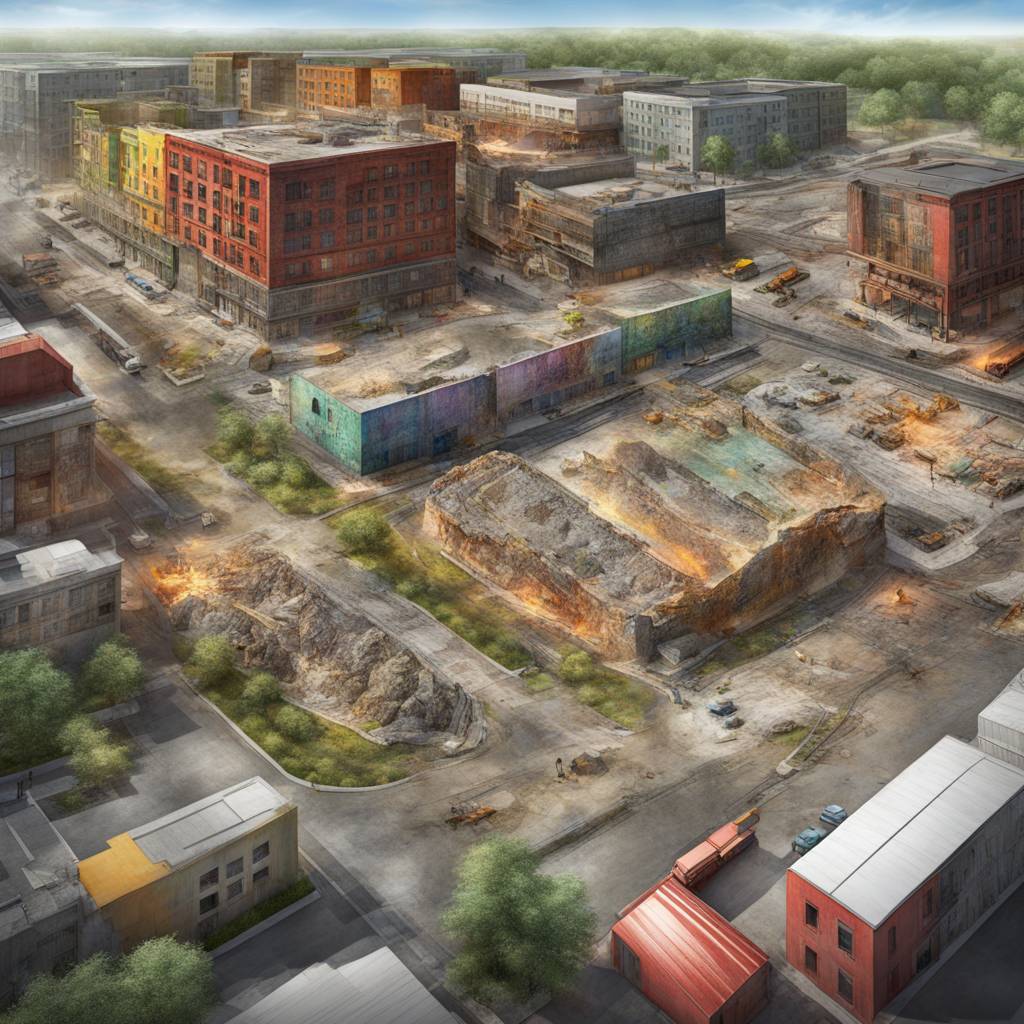The Wattle Street site in Pyrmont, once a famous sandstone quarry and later a dump site for the City of Sydney council, will now be transformed into a mixed-use precinct following the approval of a development proposal on Thursday night. The 12,000 square metre block located between Wattle, Fig, and Jones streets will soon house apartments, offices, shops, a childcare centre, and two sports courts. This historical site, known as the “Hellhole” quarry from 1870 to 1888, provided sandstone for the construction of Sydney’s General Post Office in Martin Place. The council purchased the site in 1906 and used it as a depot until operations ceased in 1990, after which it became a dump site for various materials.
Developer Landream, known for projects such as the Opera Residences in Circular Quay, acquired the site in 2018 for $200 million with the condition of providing a childcare facility and multi-use indoor courts. The approved development plan includes the construction of 237 apartments, including 63 three-bedroom units, a childcare centre with 91 places, and a recreation centre that will revert to council ownership. The building will stand 12 storeys tall at its highest point and promises to bring new life to the once derelict area near the Wentworth Park light-rail stop on the L1 line. The former quarry site, which also operated as a waste yard, will now be an attractive and vibrant precinct offering a mix of residential, commercial, and community facilities.
The Wattle Street site has a special place in Sydney’s history as one of three main Pyrmont quarries producing Sydney sandstone, alongside Paradise and Purgatory. While Paradise was known for producing the best golden sandstone, Hellhole was considered inferior and required significant labor for extraction. The site’s transformation from a quarry to a council depot to a dump site reflects the changing needs and priorities of the city over the years. The approval of the new development signals a new chapter for the area, bringing modern amenities and facilities to the inner-city location.
The redevelopment of the Wattle Street site signifies a significant investment in revitalizing an inner-city area that has long been neglected and underutilized. The mixed-use precinct will not only provide much-needed residential and commercial space but also contribute to the social and recreational fabric of the community with facilities such as a childcare center and sports courts. The development plan aligns with the City of Sydney council’s vision for sustainable urban growth and the enhancement of public spaces for the benefit of residents and visitors alike. The project’s approval represents a step towards reimagining and repurposing historical sites for contemporary needs and ensuring their continued relevance and contribution to the city’s urban landscape.
The construction of 237 apartments, including a significant number of three-bedroom units, reflects a commitment to catering to diverse housing needs and demographics within the community. The inclusion of a childcare center with 91 places will also address the growing demand for quality early childhood education and care services in the area, supporting families and working parents. The provision of multi-use indoor courts adds a recreational element to the precinct, offering opportunities for physical activity and community engagement. The development’s design and amenities aim to create a vibrant and inclusive environment that enhances the overall quality of life for residents and visitors to the area.
Overall, the approval of the development proposal for the Wattle Street site in Pyrmont represents a transformative opportunity to revitalize a historically significant but underutilized area within the inner city. The project’s mix of residential, commercial, and community facilities, including apartments, offices, shops, a childcare center, and sports courts, promises to bring new life and vitality to the precinct. The inclusion of modern amenities and the reimagining of the site’s historical significance demonstrate a thoughtful approach to urban development that balances heritage preservation with contemporary needs. The approved development signifies a positive step towards enhancing the city’s built environment, creating vibrant and sustainable urban spaces that cater to the diverse needs of the community.


